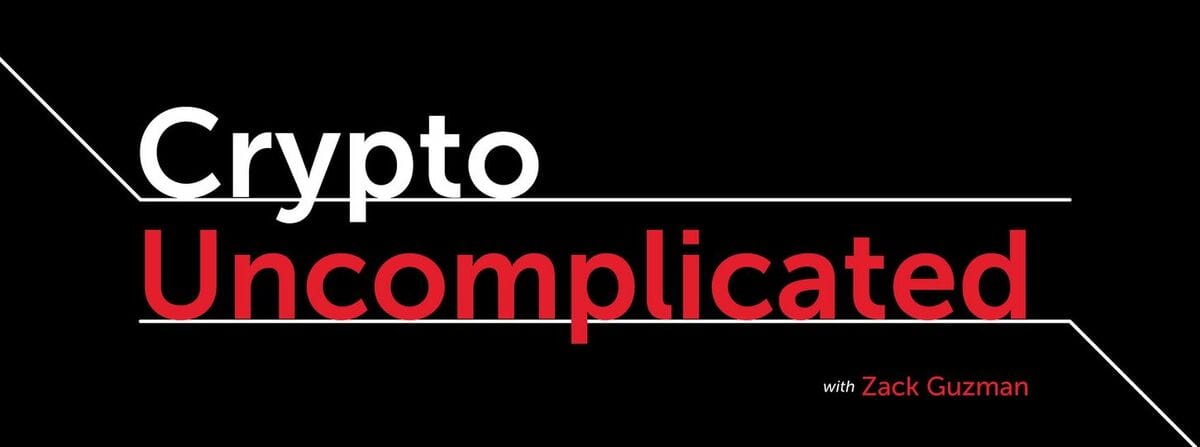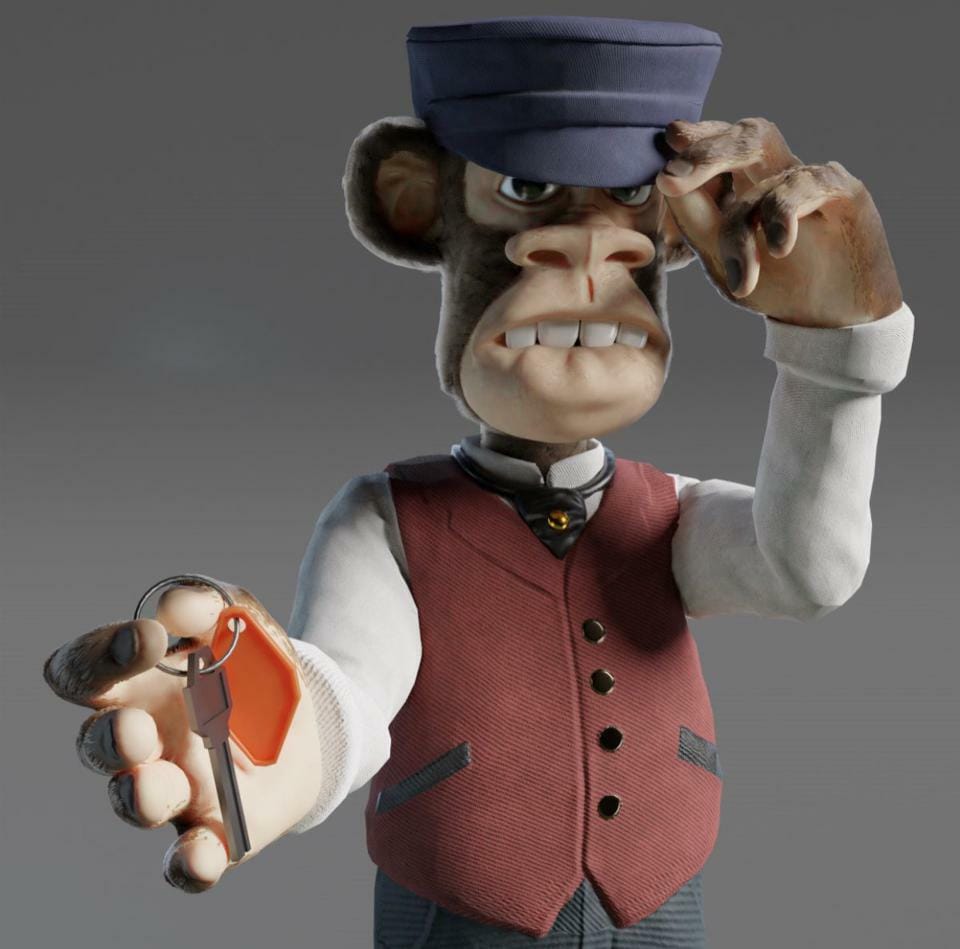- Crypto Uncomplicated
- Posts
- What is an NFT? Not what it was even just months ago
What is an NFT? Not what it was even just months ago

Crypto Uncomplicated is a free crypto newsletter distilling all the happenings in the crypto space. Unlock the full experience as a paid subscriber to go deeper with more details about the inner-workings of the best strategies and projects. Recently, paid subscribers learned how to unlock more than 3X the yield they might be earning on exchanges like Coinbase and learned more about one of Zack's favorite crypto projects, Terra, before it surged another 30%. Upgrade today!
Living in an age of mass produced items that all look alike, how do you prove ownership over anything?
My iPhone looks like your iPhone, my Xbox looks like your Xbox, my Honda Civic looked like any other Honda Civic until I slapped sick under glow on it and drifted through the streets of Orange County as a high schooler.
Of course, I also had a title to the car to prove ownership if a cop ever decided to pull me over (they dare not.) But how do we prove ownership over digital items? That's where NFTs or "non-fungible tokens" come in. Yet, just as quickly as they proved out verifiable ownership in the digital age, they have already evolved well beyond only stopping there. So what are NFTs?
Originally, NFTs were defined by their simplest form: An NFT is a digital asset that links ownership to unique physical or digital items.
Fair enough. Let's start with what NFTs were even just last week before we get into what they are now.
Mainly, the reason why anyone in the mainstream started to even care about NFTs began with a $69 million auction at famed auction house Christie's. In March of last year, a collage work of digital artist "Beeple" AKA Mike Winkelmann went from a starting bid of just $100 all the way up to $12 million in a matter of hours all the way to a final selling price of $69 million.
When I asked Christie's art specialist Noah Davis at the time if he had seen anything like it, his answer was simple. "Absolutely not. Nothing even comes close," he said.
Since then, we've all heard the same points about NFTs reiterated over again and over again. Yes, you could just download the very same Beeple digital art piece that was sold for $69 million and display it for free. But that doesn't mean you own it. Only the owner who bought the NFT can boast that right.
To be extremely clear, the analogy often cited is that there is only one original Mona Lisa from Leonardo da Vinci. You can pass through the Louvre in Paris and take a picture and print it out and say you "own" it, but all you'll really own is just a copy. It's not the same.
With digital art being unique in that it's really just a file (be it a .jpeg picture or a .mp4 video) NFTs elevate ownership to a different level. Everything is recorded on the blockchain, so ownership is easily traceable. If you were to ever buy an art piece and resell it, you wouldn't need a third party to verify it's authentic because its resale history would be easily verified on a public blockchain. That is HUGE when you consider there is a multibillion-dollar industry built simply around verifying whether memorabilia or art is indeed legit.
But only looking at NFTs as digital art would overlook the last year in innovation which has carried the technology well beyond just that now.
Where NFTs are heading
Outside of digital art, NFTs have now unlocked the idea of digital ownership writ large. At their core, NFTs are just one-of-one crypto tokens that correspond to a digital entity. Think of them as a digital Apple Airtag that can be attached to literally anything. For fun a while back, I NFT'd a joke from my old Harvard Commencement speech just because. To my knowledge it was the first Harvard commencement speech ever NFT'd and I own it just for fun. But anything can become an NFT if anyone wants to pay the gas fees to mint in on a blockchain.
That also presents a bit of a challenge that's still getting worked out. In the process of NFTing something, there is always a challenge of proving ownership in the analog world versus the digital world. That is, who really owns anything?
For an artist like Beeple, that's fairly easy to prove. If you create your own work, you're free to mint it on whatever platform you like. If you're famed "Pulp Fiction" Director Quentin Tarantino, ownership gets decisively murkier. Last year, the director wanted to NFT pages of his original screenplay. Miramax, the studio that produced "Pulp Fiction," stepped in to sue to prevent that from happening citing their ownership over all things "Pulp Fiction." Eventually Tarantino's NFT plans were stifled.
But even aside from the first question of "who really owns what to mint an NFT" is the buy-side question of "what am I really owning when I buy this NFT?"
Originally, a lot of artists maintained their commercial ownership rights over their artwork. That meant NFT buyers were really only buying a right to say they owned a digital token that proved they owned a thing (that, in fact, they didn't really own commercial rights to.) Make sense? Not really. That's why NFTs were openly mocked by a lot of people, including in this hilarious summary from "skatie420" on TikTok:
The NFT Game-changer
There are a lot of legitimate concerns with NFTs beyond just the analog-to-digital ownership gap that gets at who "really" owns the rights to anything that gets NFT'd. NFT collections are also just as privy to market manipulation as traditional art re-sellers: Just as traditional art collectors can corner the entirely of da Vinci's artworks and sell them at a premium (or collude to get prices bid up in select auctions) NFT collectors can do the same with digital art.
If you want to explore that phenomenal further, I highly recommend the documentary "Exit Through the Gift Shop" which explores the way the traditional art market can easily be manipulated. If you want to see how that correlates with NFTs, a lot of people have been applauding the YouTube documentary "Line Goes Up."
But what people overlook when they limit their definition of NFTs only to digital art, is the recent change in what they represent. NFTs now represent access -- not just ownership. In the case of the very expensive Bored Ape Yacht Club NFTs, people also get access to a community. On its face, the NFT is just a digital monkey. Beyond that, it's access to a community that includes Jimmy Fallon, Snoop Dogg, and Justin Bieber (who paid more than $1 million for his NFT.)
But more importantly, this weekend something even bigger happened. The team behind Bored Ape Yacht Club, Yuga Labs, bought the only NFT project that is in the same stratosphere as Bored Apes. They bought the commercial rights to the NFT project Crypto Punks. Importantly, the team plans to pass along all commercial rights to individual owners -- something that Larva Labs, the team behind Crypto Punks, had failed to do up until this point. It also creates a new standard that will likely apply to any new project looking to match the standard of the two largest NFT projects.
The reason that's important is because it fully unlocks the intellectual property behind each individual art piece. In the Web2 world, it's easy to see why that's valuable. Think about the "Star Wars" franchise. As a whole, Disney paid a little over $4 billion to buy the owner of Star Wars, Lucas Films, in 2012. Along with that purchase, Disney got the rights to spin out an infinite number of series and more on each character within that universe, including the likes of "The Mandalorian" (which is still the only reason I pay for Disney+.)
But what does intellectual property look like in Web3? What does intellectual property look like when it's not Lucas Films who owns the rights to all of their universe, but 10,000 individual NFT holders? Things suddenly get interesting.

An artist rendition of Bored Ape #1798 dubbed "Jenkins the Valet." (Courtesy of Jenkins The Valet)
In the case of Bored Apes, individual owners are unlocking the story of the art in the pieces they own. For example, NFT project Jenkins the Valet is currently allowing a community to vote and form the story arch of one specific Bored Ape in that universe dubbed "Jenkins the Valet." Members of that community, which all bought NFTs to join and play a part in voting on where things go, are entitled to a share of the proceeds from whatever comes from that intellectual property. That could include a possible future animated series, but more pressingly, a book that comes from a New York Times Bestselling author.
It's a wild example of what NFTs unlock and where all of this could be heading. NFTs aren't just art without commercial rights anymore. NFTs are quickly becoming much more than that.
Remember, I'll be sharing a deeper dive next week on one of the NFTs I just paid more than $2,000 to buy. Lunacy? Genius? You'll have to be a paid subscriber to find out. You can sign up for just $4.99 a month here. In full disclosure, I won't be able to guarantee that price forever.
What do you think? Are NFTs worthy of all the hype? Let me know in the comments and as always, hit me up on Twitter or in the DMs with more questions!